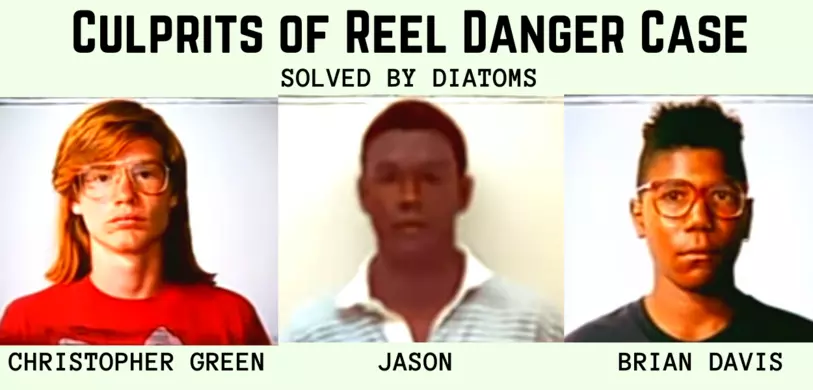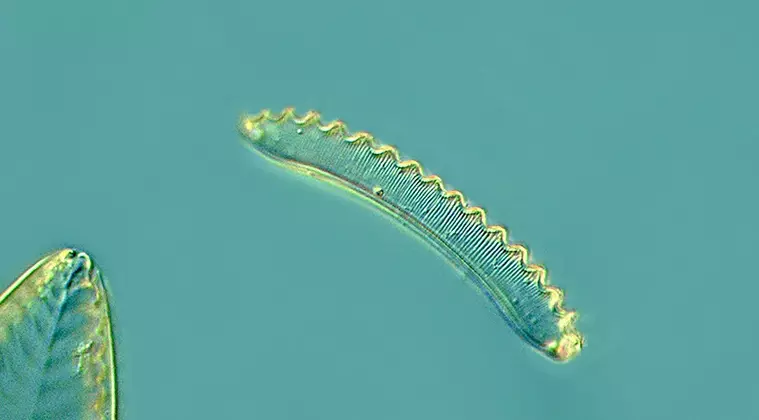You can never foretell what will happen next. When happy moments turn horrifying. That’s what happened to Steven and Bobby one afternoon when they were enjoying fishing at Stenger’s Pond in Waterford.
In this short post, I discuss how the Reel Danger attack case of Two Young Boys at Stenger’s Pond, Connecticut was solved, and how and what evidence put the culprit behind the bars.
The case was discussed first in the research paper published by Dr. Siver et. al. (1994) and then aired as Forensic Files (Season 7, Episode 3) cases on youtube.
Case History: Reel Danger, Stenger’s Pond Attack, Connecticut
One day in 1991, two boys named Steven and Bobby became the victim of three unknown attackers who were older than the boys. One of the assailants pulled out a knife, while the other two abducted Steven and Bobby to the ground.
When Steven tried to fight back, one of them struck him with a baseball bat— knocking him unconscious. Then 3 assailants handcuffed them, patched their months using duct tape, and threw them in Stenger’s pond, where they were fishing.
They didn’t stop there. Steven received another blow with a baseball bat. While Bobby knew he would be next— so he acted smartly. He pretends to be unconscious, and it works. All the assailants flew away with the boy’s bicycles that they thought would drown soon.
Bobby’s heroic and smart act comes into play. He swam out Steven from the pond and brought him to the nearest house for help. Both were brought to the emergency room of Lawrence & Memorial Hospital, New London. Doctors say, “Steven was mostly drowned to death and there is no way he could survive without the smart act of his friend Bobby.”
It was now up to police investigators to bring the culprit to justice. The investigators mainly implied with two questions:
- Who had tried to murder Steven and Bobby?
- What’s the motive?
Read More: 8 Cases Solved by the application of Diatoms in Forensic Science
Who Were Attackers in Case of Reel Danger Connecticut?

The three suspects (also proven guilty, culprits) of the Stenger’s Pond attack were;
- 17-year-old Brian Davis
- 17-year-old Christopher Green (prior history of minor offenses)
- Jason (juvenile)
How Culprits of Reel Danger Case Were Caught?
As no evidence was recovered in the early days, the investigators looked for any suspicious activity that day. Luckily, they found one.
On the same morning, Susan Picardi narrates an incident to investigators about a young teenager asking for help. He knocks on Susan’s door, and asks for something to eat, and tells her that he is diabetic. In generosity, she gave him a glass of orange juice. And he walks out of the house and says thank you to her.
This all seems normal. What wasn’t was, what Susan saw from her bathroom mirror. The young teenager approached two other youngsters, and one of whom had a green baseball bat. She found it suspicious and began yelling at them, causing them to flee.
And this is what the police are looking for— a baseball bat and three suspects.
Susan also provides a detailed description of them. She stated one of the youngsters has a U-shaped scar on his forearm and another one wears eyeglasses.
Based on that, police soon apprehend Brian Davis, a young man with a U-shaped scar. And the other two were caught as well. Police discovered two more evidences at Green’s house: a knife and muddy footwear.
But as all do, they denied any involvement in the assault. So, now investigators get a burden of proof to link them to the crime scene.
What Evidences were Found in Reel Danger Case?

At Stenger’s Pond: Duct tapes and baseball bats were the possible evidence that could have fingerprints. But no fingerprints were found that can put three culprits behind the bars. However, biological algae called diatoms were used to link all 3 assailants to the crime.
Green’s House: Knife that Bobby told police they have found. And a pair of wet muddy sneakers in the basement that investigators don’t know how to use as evidence, till they get a suggestion from the FBI.
Read More: 7 Importance of Casting In Forensic Crime Investigation [Explained]
How Diatoms Help in Solving the Reel Danger Case of Stenger’s Pond Attack?
When investigators run out of options for linking suspects to the crime of Stenger’s Pond in Connecticut, New London, they ask for help from other facilities. And FBI suggested contacting a forensic limnologist, named Dr. Peter Siver.
Note: Forensic limnology is the study of freshwater microorganisms, especially diatoms, for finding and comparing the various genes for forensic application.
Dr. Silver extracted the mud from the collected sneaker and matched them with the diatoms that were present in Stenger’s pond. And they matched. It provides a fact to investigators about their involvement at the crime scene.
Extraction Procedure Used by Siver:
- Scrub mud from sneakers
- Add a mixture of sulfuric acid and potassium dichromate— makes the lifeform visible.
- Observe under a microscope.
Read More: Forensic Analysis of Diatoms in Drowning: Extraction and Procedure
What Living Genes and Diatoms Were Found?
From sneakers, there were a large number of microorganisms were discovered. Interest sticks to two major findings: one is Eunotia (diatoms) and the other is Chrysophytes (golden algae) in Stenger’s Pond case.
1. Eunotia: They are a genus of diatoms commonly seen in lakes and are characterized by crescent shapes of their glass siliceous shells. In the Reel Danger case, a total of 3 species of Eunotia were discovered in high concentration in both sneakers and reference Stenger’s pond water samples. The most common Eunotia species was Eunotia spp. (Ehrenberg). Following is the image of Eunotia diatoms.

2. Scaled Chrysophytes: A type of golden algae that can easily be differentiated from diatoms, as they can swim. The most common gene in the mud sample from sneakers was Mallomonas Caudata. It was the same gene that was extracted from the pond’s water. Here is the image.

What Happens to Culprit of Reel Danger, Connecticut?
All three suspects Christopher Green, Brian Davis, and Jason were charged with assault and attempted murder.
- Brian Davis and Christopher Green were sentenced to a minimum of 18 years of prison.
- Jason— a juvenile (2 months to 17th birthday), was sentenced to a juvenile facility for young offenders.
Read More:
- Famous Cases Related to Diatoms: How Diatoms Helps in Solving Crime?
- 9+ Significance of Diatoms in Forensic Science
- Forensic Analysis of Diatoms in Drowning: Extraction and Procedure
- Second Shot at Love: Killing of Darryl Sutorius Case Study | Forensic Files
- Burtonian Line: Cause, Color, Mechanism, Symptoms
- Private Thoughts Forensic Files Case Study: Hodges Family and Earl Bramblett

FR Author Group at ForensicReader is a team of Forensic experts and scholars having B.Sc, M.Sc, or Doctorate( Ph.D.) degrees in Forensic Science. We published on topics on fingerprints, questioned documents, forensic medicine, toxicology, physical evidence, and related case studies. Know More.
